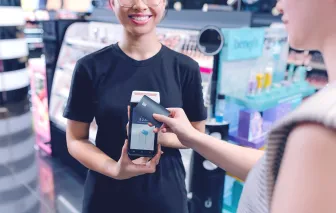With Apple’s recent announcement of Tap to Pay on iPhone, use of mobile devices to accept payment at the point of sale continues to gain traction. With that in mind, I thought it was important to discuss the differences between PIN on terminal, PIN on glass and PIN on mobile, as card authentication will continue to play a big role in how tap to pay on mobile devices will ultimately work.
Micro-merchants and small businesses can have a low number of monthly transactions, and spending thousands of dollars on a full-blown POS system isn’t always cost-effective. If you are one of them, you may have been using mobile POS solutions to accept electronic payments to keep your cost down. Over the years, this type of payment solution has gone through many changes – card readers have become smaller for easy portability. In other instances, tablet POS solutions have helped many businesses improve staff efficiency and customer experience. With EMV chip and PIN transactions becoming more common in the U.S., there is a need for mobile POS solutions that can securely accept PIN while still keeping the technology costs down for merchants. This is where PIN on Mobile comes in.
Though this technology is widely talked about in the payments industry, there is still some confusion about the terms used to discuss it. Some call it PIN on Mobile, some call it PIN on Glass. To add to the mix-up, PIN on Terminal also gets thrown around. To bust any myths or confusion, I wanted to take this time and accurately define these terms for you:
What is PIN on Terminal?
PIN on Terminal refers to PIN entry on a payment device that has been certified by PCI and includes card readers or terminals with physical PIN pads. This includes most payment terminals that you see in the wild today.
In a typical customer use case – a shopper visits a retail store, selects the merchandise and if they are paying with a debit card or PIN-enabled credit card, the PIN entry takes place on the keypad built into the payment acceptance device. This PIN along with the card information is securely transmitted to the issuer for authentication. Once the issuer gives the green signal on the information provided, the transaction is accepted.
What is PIN on Glass?
PIN on Glass refers to the PIN entry on a touchscreen of payment device that has been certified by PCI. This is different from PIN on terminal, as a physical keypad is not present on the device for PIN entry.
Using the same example mentioned above, the customer, in this scenario, enters their PIN using the touchscreen of the payment device to validate their card. The payment information along with the PIN is transmitted to the issuer for authentication so the transaction can go through.
What is PIN on Mobile?
PIN on Mobile, also known as PIN on Consumer-Off-The-Shelf Devices (COTS), specifically refers to transactions where the PIN is entered on a merchant’s consumer-grade tablet or mobile device.
This is vastly different from the previous two methods. The card reader used in this solution is PCI certified but does not have a touchscreen or keypad for PIN entry. The consumer-grade mobile device that is used as a point of sale (POS) system, in this case, is not PCI certified. Since the PIN entry is taking place on the tablet/smartphone, PIN on Mobile uses software-based PIN entry to make sure the sensitive authentication information remains secure. The card readers used in this solution are also low cost and do not accept magstripe transaction due to security reasons. For this transaction to work, PCI has released a different standard called - Software-Based PIN Entry and authentication on Consumer-Off-The-Shelf Devices – popularly known as PIN on COTS. This enables the tablet or mobile device to be connected to a low-cost card reader and securely accept PIN-based payments.
Hope you found this blog post helpful. Feel free to ask your PIN on Mobile related questions in the comments section below or you can reach out directly and I’d be happy to chat.
Irfan Nasir is Head of Solutions Development and Deployment, North America. at Ingenico











